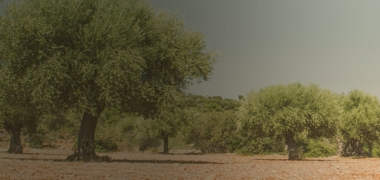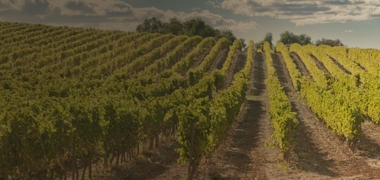Plots in Burgos - buy, sell or rent easily
Where to buy land in Burgos
Burgos is one of the provinces of Castilla y León with one of the lowest average values of urban land for sale, with just over €45/m². It is an industrialized territory, with population rates concentrated in large cities. This means that the most expensive urban lots are in municipalities such as Entrambasaguas, Medina de Pomar, Villarcayo, Saldaña de Burgos, Villagonzalo Pedernales and Villasana de Mena. Building plots are experiencing a similar situation, as they are also in great demand.
Meanwhile, the cheapest land for sale in Burgos is in Mazuela, with a minimum value of €0.60/m²; Nava de Roa and Gijano, with €1/m²; Espinosa de Los Monteros, with €2.10/m² and Sopeñano, with €2.30/m². This is due to the great availability of rustic land in the province.
A landscape of high sights
The climate is influenced by the orography, especially by the elevation of these lands of La Meseta, with typical characteristics of the continental Mediterranean climate, which includes cold, dry, and long winters with mild summers. The northernmost area is influenced by the Atlantic climate.
These circumstances give rise to a great landscape and relief variety, formed by a succession of mountains, valleys, and plains. It is one of the provinces with the highest altitude, being located between the Cantabrian Mountains and the Iberian System, in which we find various protected areas.
About 23% of the territory is forest area. It has more than 600 Public Utility Forests (317,000 hectares) that increase every year.
It is in the mountainous areas where pine forests, leafy trees, holm oak forests, cork oak forests, oak forests and beech forests grow. These specimens are used in timber production. While the riparian forests appear next to the streams and pastures on the slopes.
The best soils for cultivation are located in the plains of the region's rivers, where fruit trees predominate, and horticulture is practised.
A population concentrated in the largest urban centres
The province of Burgos has an area of 14,292 km² and a population of 356,958 people. It is the third most populous in Castilla y León. Its distribution is irregular since most of the inhabitants are concentrated in the capital and the largest cities, such as Aranda de Duero and Miranda de Ebro, are more focused on the industry. It is in these where the greatest development of urban, industrial and infrastructure land has taken place, which has boosted the urbanization process. While in rural areas, the towns are smaller and are becoming depopulated.
Burgos is the Castilian-Leonese province with the highest average price per square meter of urban land (€52/m2 approx.).
A solid and diversified economy
The province of Burgos belongs to the Autonomous Community of Castilla y León and is in the north of Spain. It has an extension of 14,022 km² and is very well connected with Spain and the European continent. This region enjoys a good level and quality of life, thanks to the citizen security it offers, as well as the wealth generated by its heterogeneous production system.
The economy of Burgos is consolidated. It is one of the most industrialized provinces in the country, which gives it great economic stability. In addition, it has modern infrastructures and good communications that facilitate the export of its products.
Being so diverse, in each of its regions, there are conditions for the development of different types of companies, dedicated to renewable energies, logistics and agro-industrial products, among others.
In terms of GDP distribution, services (which require specialisation) are at the top, followed by industry (which exceeds the national average), construction, agriculture, and energy.
The rural environment is of special interest since agriculture and livestock contribute a higher percentage of GDP than the Spanish average.
A rainfed agriculture
The primary sector represents around 1% of Burgos companies and is one of the sectors that contributes the most to agricultural income in the region (more than 13%).
About two-thirds of the territory is useful agricultural land. Rustic land occupies around 1,000,000 hectares, the majority dedicated to pasture (more than 700,000), others to herbaceous crops and the rest to the plantation of forest species. It is one of the largest cereal producers in Spain.
Among its crops, the rainfed ones stand out with the largest area: vines, cereals (barley and wheat), oilseeds, fodder, sunflowers, and potatoes. While the redoubt destined for irrigation is planted with vegetables and beet destined for the agri-food industry.
In addition, the wine sector has Denominations of Origin: Ribera del Duero, Arlanza quality wine and Rioja wine.
The livestock that is developed is extensive types of sheep, goats, pigs, and cattle, for the production of meat, milk and wool.
The animals are fed in the meadows and pastures, as well as with crops in the area, which is why high-quality meats are produced with the Designation of Origin.
The Board supports the sector with different grants to promote generational change and the creation of new companies in the agri-food sector.
A diversified and international industry
Burgos is the most industrialized province of Castilla y León. As well as the third province of Spain in terms of the economic contribution of the industry (around 30% of GDP).
Due to its manufacturing history, which began to develop in the second half of the 20th century, it currently has a strong, diversified, specialized and competitive industrial base. Its GVA is around 27%.
The most relevant sectors in the region and which account for more than 70% of industrial employment are pharmaceuticals, chemicals, the automotive industry, metal products, rubber and plastic, the manufacture of machinery and equipment, aeronautics, and agri-food.
In recent years, one of the fastest growth has been that dedicated to food and beverages.
Semi-finished goods are mainly manufactured and incorporated into different production processes for their final transformation; specialized products are integrated into the presentation of final articles and finished goods.
The products manufactured in Burgos are distributed nationally, Europeanly and internationally.
The industry has determined the structure of the urban space, with the creation of polygons that define the productive areas by sectors. It has around 25 million square meters of industrial land distributed in urbanized or in process polygons, classified in urban planning.
Specifically, the city of Burgos exceeds 2,000 hectares of urbanized industrial land. It stands out for concentrating many companies located in the urban area and more than 7% of the production facilities in the region.
From the administration, the establishment of companies is facilitated through reductions in the price of industrial land, as well as other beneficial measures to carry out investments in the different polygons distributed throughout the province.
An energy sector that tends to be green
In recent years, this sector has been updated with the implementation of new, cleaner, and more environmentally friendly energy sources. Until a few years ago, there was an exploitation of an oil field in La Lora, which has given way to the appearance of wind power mills in its landscape. Likewise, the area was the oldest nuclear power plant in the country, now dismantled. Currently, there is a commitment to cogeneration, much more in vogue these days due to its efficiency and use of energy resources; for example, the use of biomass or the treatment of waste (slurry) for the production of thermal energy.













































































